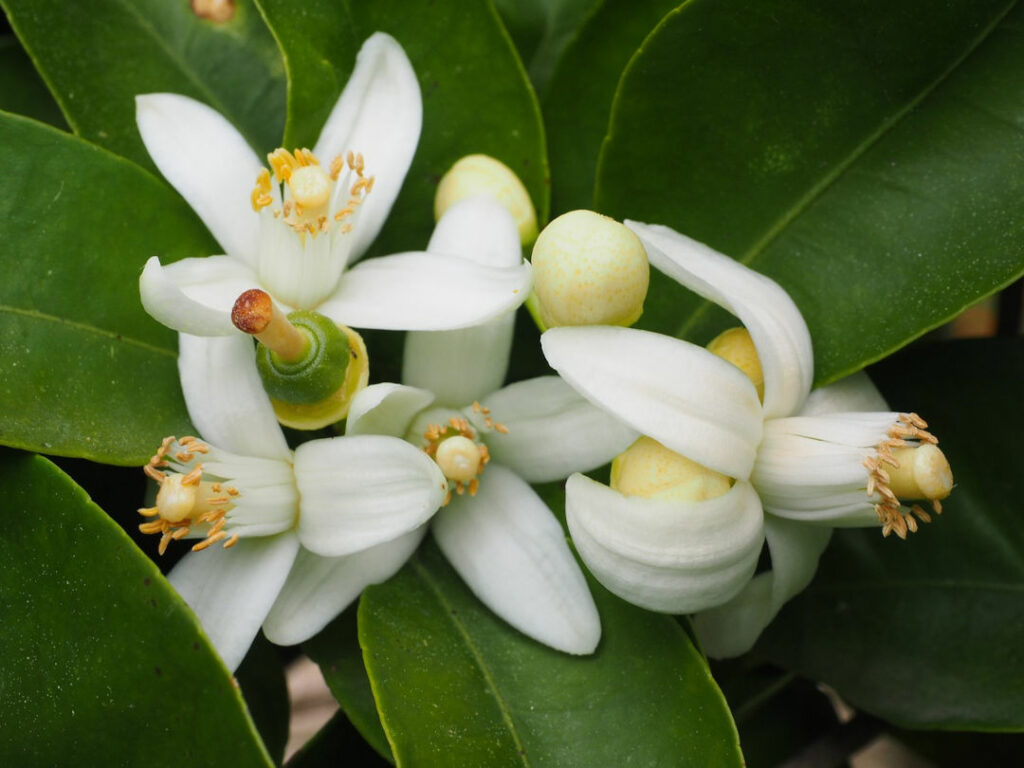
Morocco
Orange Blossom
Citrus sinensis

General Description / Cultural Significance
Morocco identified orange blossom as the fragrant most highly significant to Moroccan cultural life. Orange blossom water is used as a symbol of hospitality in the country. A visitor is greeted by the home’s host with orange blossom water to sprinkle on their hands and clothes. This welcome is often the first introduction to the scent followed by pairings of other orange blossom scented delectables in the form of pastries and confections, but orange blossoms are also included in salads and used in Moroccan tea and coffee as an added flavor.
In Morocco, the orange blossom water is general home distilled. This practice still holds true in the larger imperial cities like Fez, Raban, Marrakesh, and Meknes. The distillation process is ancient and was developed by Muslims from Andalusia (Muslim Spain). This tradition was brought to Morocco by migrating Muslims and Jews after the fall of Granada in 1492.
Climate Change / Conservation Status
Morocco relies heavily on agricultural resources. Due to climate change, hot seasons are expected to be longer and water levels are expected to decline. Rainfall is key in the production and flourishment of citrus fruits, but sadly the threat of droughts is becoming more imposing and threatens the vivacity of citrus fruit production in the country.
The production of citrus fruits in Morocco, specifically that of oranges, tangerines, and mandarins, has fallen significantly due to a scarcity of water. High temperatures in July-September of 2022 greatly affected the citrus crops blooming and fruiting periods.
An increase in heat and pressure on water resources has caused roughly six percent of citrus areas and ten percent of mandarin and tangerine areas to be lost in Morocco. After a surge in the citrus production market in 2020/21, Morocco faces uncertainty due to drastic climate changes. As of May 2023, the nation was experiencing very little rainfall, harming agricultural yields, and requiring increased imports as food prices continue.
Alternate Names
Orange tree blossom
Sources
Amina Elaissami, First Secretary, Embassy of the Kingdom of Morocco
Oulfakir, S. 2022. Between Risks and Solutions: Where is Morocco’s Climate Headed? Assafir Al-Arabi. https://assafirarabi.com/en/49130/2022/12/01/between-risks-and-solutions-where-is-moroccos-climate-headed/.
Hooper, O. 2023. Rainfall in Morocco Arrives in Time to Revive Citrus Plant Production. Morocco World News. https://www.moroccoworldnews.com/2023/03/354640/rainfall-in-morocco-arrives-in-time-to-revive-citrus-plant-production.
Wright, R. 2022. Morocco: Citrus Annual. United States Department of Agriculture. https://apps.fas.usda.gov/newgainapi/api/Report/DownloadReportByFileName?fileName=Citrus%20Annual_Rabat_Morocco_MO2022-0030.pdf.
Bensaid, Y. 2023. Despite the decline in citrus volumes in Morocco, we are doing pretty well. Fresh Plaza. https://www.freshplaza.com/asia/article/9512825/despite-the-decline-in-citrus-volumes-in-morocco-we-are-doing-pretty-well/.
Wilkinson, R. 2021. Morocco ramps up citrus production. EuroFresh.
https://www.eurofresh-distribution.com/news/morocco-ramps-up-citrus-production/.
Zhong, R. 2023. Climate Change Powered the Mediterranean’s Unusual Heat Wave. New York Times. https://www.nytimes.com/2023/05/05/climate/heat-wave-spain-morocco.html.

